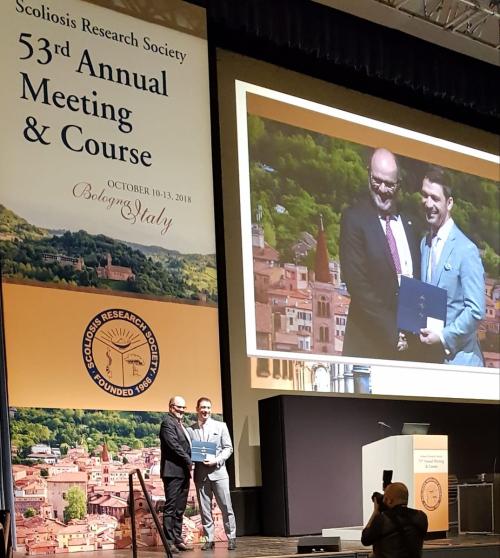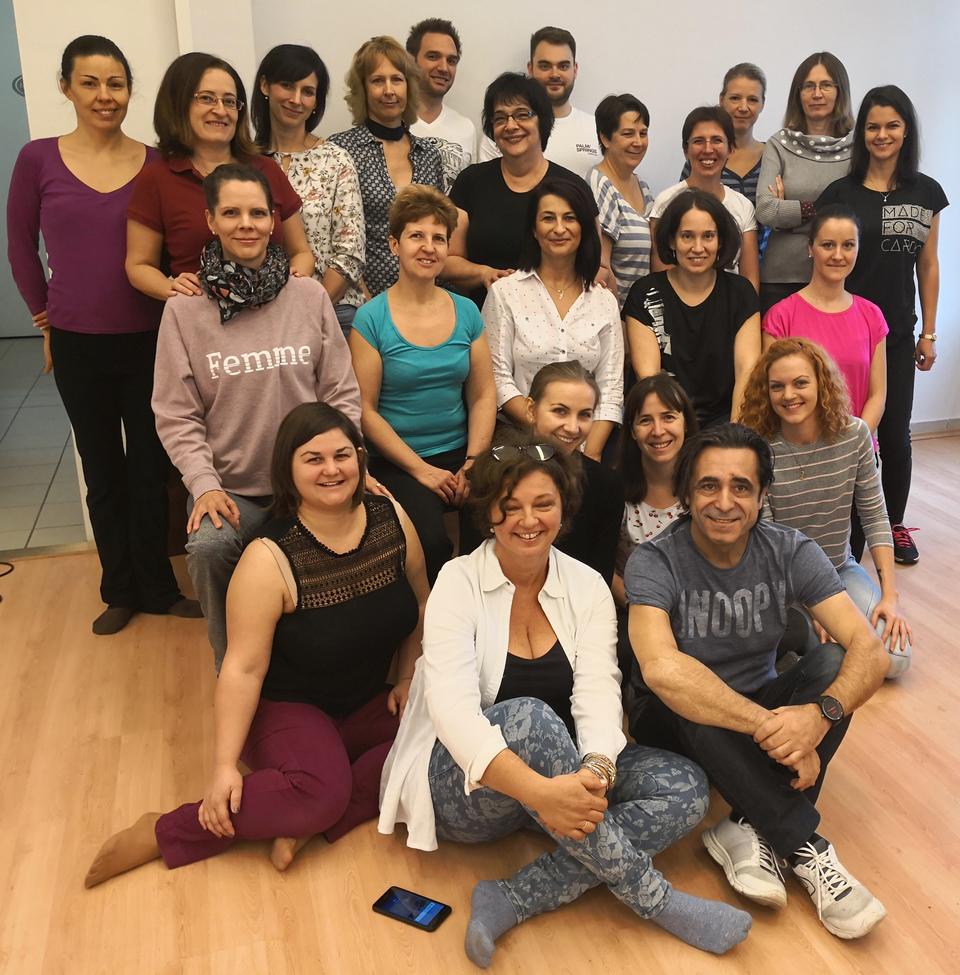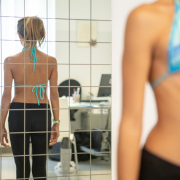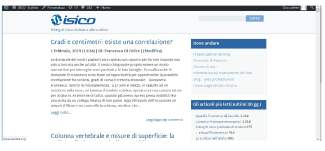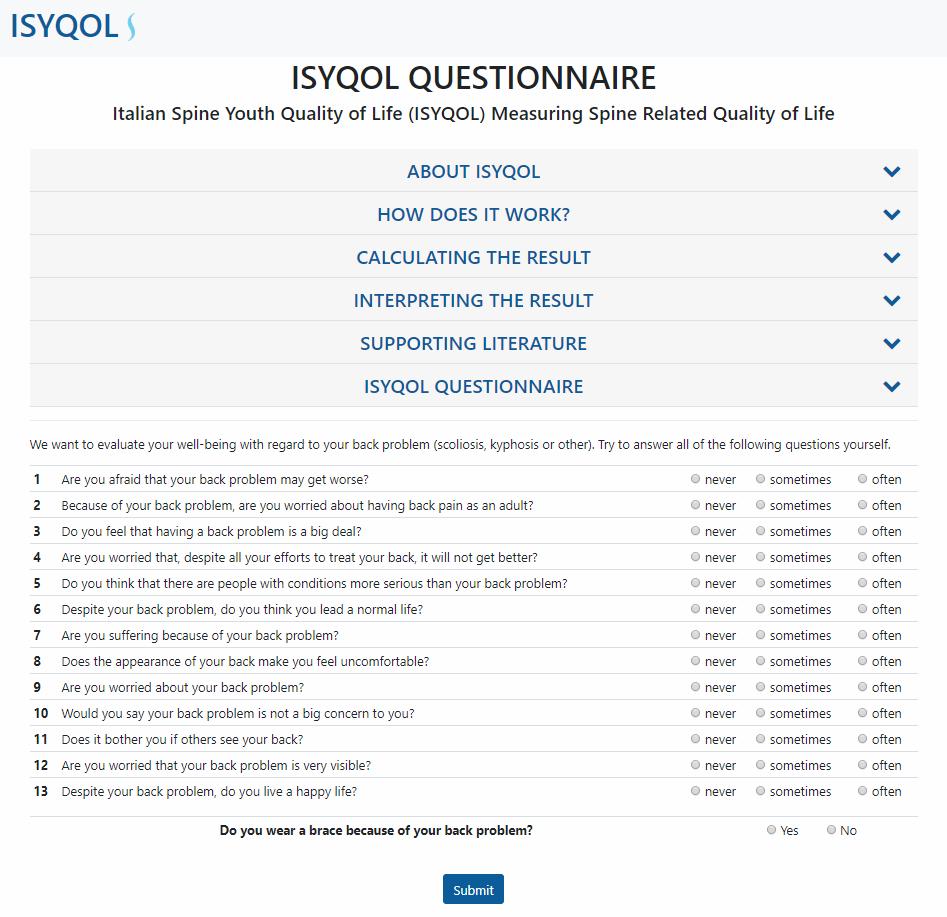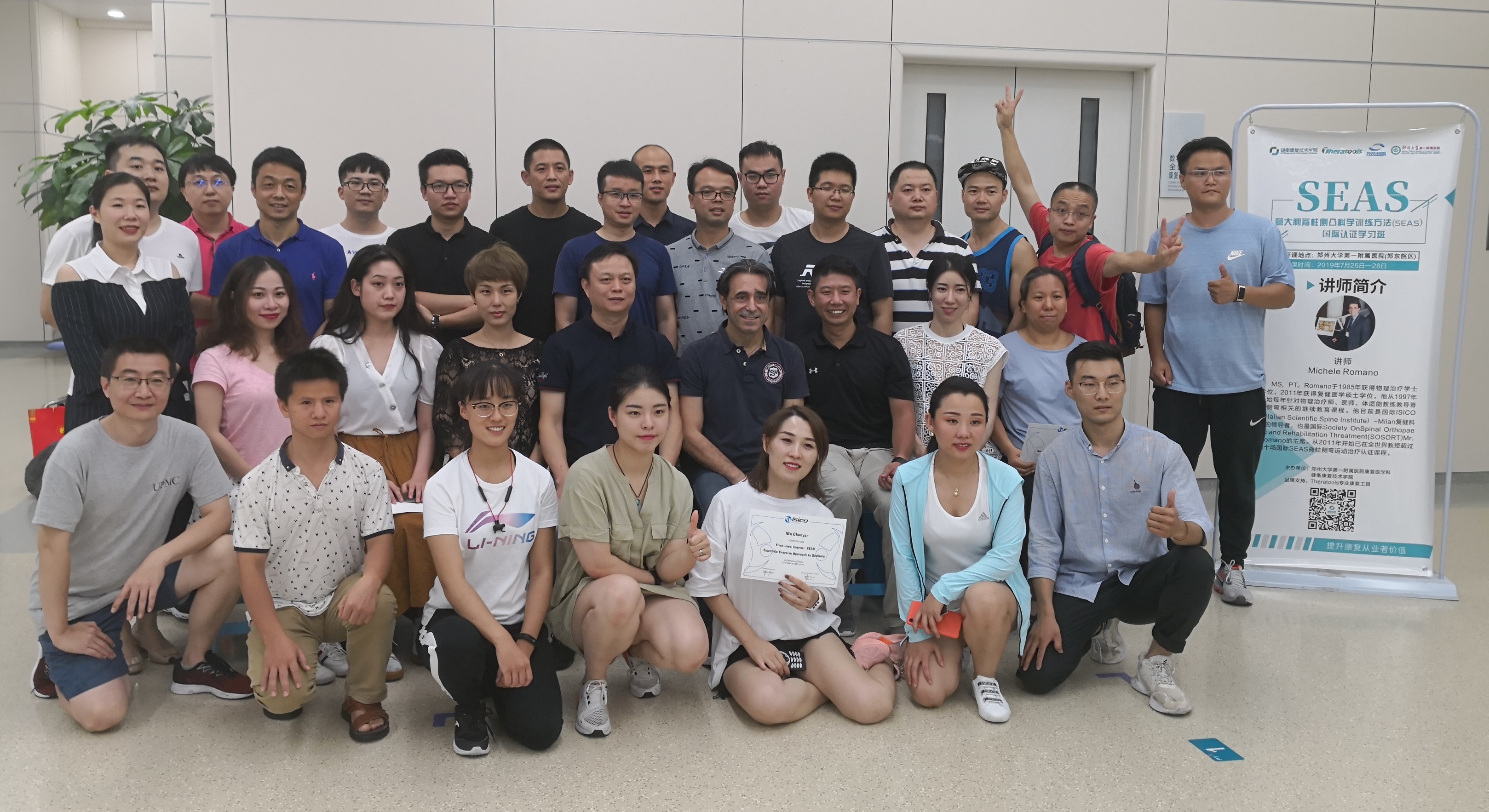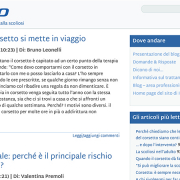SEAS (Scientific Exercises Approach to Scoliosis) training: participants’ feedback
Going round the world providing training on our exercise-based approach to scoliosis has become an increasingly important part of what we do. Indeed, in addition to clinical work and research, our activities include the provision of practical training.
We get great pleasure and satisfaction from the positive feedback we receive via the evaluation forms filled in by participants at the end of our courses. “Great!”, “Wow!”, “a very good organisation”, “inspiring” and “a fantastic course” are some of the most frequent remarks. Participants seem keen to put into practice what they have learned, and express an interest in taking part in higher-level SEAS courses.
Any suggestions? Participants have suggested we provide even more videos and practical clinical examples and review the planning of each day’s programme of activities. They would also like us to organise even more courses.
Any comments? From Wroclaw, Poland: “For me it was cool. I learned many useful things which I can use with my patients”. From New York: “It was a good mixture of theory and practice”. From Sydney: “It was a wonderful course which gave us a lot of information about treating scoliosis and helping patients to maintain correction”.
Should we go for the straight back goal?
Paola has scoliosis: her back is twisted on itself. Therefore, she has been given a brace to wear — a nice plastic “jacket” that she is actually going to have to wear for some years to come. But why? Well, to straighten her back, of course!
This, of course, is a logical train of thought, but unfortunately logic and medicine don’t always go hand in hand.
A similar logical train of thought leads many people to think that surgery can eliminate the problem of scoliosis, but the reality is that surgery simply fixes a section of the spine with screws and bolts, blocking the curve in order to stop it from worsening. And even in those instances when the surgeon manages to almost straighten the patient’s back, we have to ask ourselves whether a surgically treated scoliotic spine can ever possibly be the same as before.
The answer is that, obviously, it can’t – the fixation devices (screws and bolts) used to arrest the progression of the curve are constraints that will prevent single segments of the spine from moving.
In reality, many, if not all, treatments used in medicine don’t solve, erase or even fix the problem they are addressing. Therapy gives us the instruments we need to manage, as well as possible, our condition and all the problems it brings.
Take diabetes, for example. You have diabetes? No problem, just take a drug before each meal: it will control your blood sugar level. What it won’t do, however, is get rid of your diabetes.
The same goes for scoliosis. Scoliosis can’t be erased; it can’t be eliminated. If you have it, the first thing you have to do is accept that you have a totally manageable health problem.
Then you simply have to roll up your sleeves and get on with the business of taming it. Try thinking of it like a wild horse, but one that we can certainly tame and keep under control. Just don’t expect to be able to transform it into a fluffy little pet — it will always retain some of its wild spirit!
Receiving a diagnosis is always a difficult moment: it doesn’t matter what disease you are being told you have. Therefore, accepting the presence of imperfection is hard, both for patients and for their parents.
Sometimes it seems easier to pretend that the problem is not there, and with scoliosis it is certainly easy to do this: first of all, being “behind us”, it is harder to see. Also, at the outset it is not particularly noticeable, or may even be almost invisible, externally. Unfortunately, however, scoliosis, is sneaky and very insidious, and sooner or later it forces us to face reality. That’s when we find ourselves, once again, weighing up the treatment options. There will always be more than one treatment option, but as time goes by the possible outcomes change, and therefore so, too, do the objectives of the treatment!
The ultimate objective in scoliosis treatment is to ensure that the patient has a healthy and functional back by the time they have finished growing, and that does not mean a straight back. A healthy back is one capable of withstanding the stresses and strains of daily life for the 70 or so years that we can, on average, expect to live once we have finished growing. It is also a back that will do its job without giving us pain, and without developing a major worsening of the curves.
Science has taught us that this objective is realistic, providing the curves are still under 30°-35° at the end of growth, which is hardly straight!
In pursuit of this ultimate objective, strongly supported by the SOSORT guidelines, medical prescriptions can differ between patients, even ones whose situation is apparently similar.
In some families, there will be more than one sibling affected by scoliosis, and even though these youngsters have the same disorder, its morphology may well vary. For example, one might have a dorsal curve and another a lumbar one. Similarly, the severity of the curves can differ: you might find one girl who can be treated with exercises alone, while her older sister has to wear a brace full time.
In these situations, misunderstandings can often arise! Let me give you an example.
Laura has scoliosis, an approximately 30° curve that was discovered when she was 14 years old. After examining her, the physician prescribed a rigid brace, to be worn 23 hours out of 24. By the end of the treatment her curves had improved considerably, her trunk was perfectly modelled and symmetrical, and her scoliotic curve had decreased to under 20°!
Laura has a sister, four years younger. From the time of Laura’s first examination, the physician caring for her began monitoring her sister, too. When she was 11 years old, the younger sister began treatment involving exercises alone. By the time she finished growing, however, her curve measured between 25 and 30 degrees!
At the end of the treatment, the mother was disappointed and worried about the younger daughter’s outcome. The family, at a considerable personal sacrifice, had done everything according to the physicians’ instructions, for years bringing both daughters along for examinations and exercise sessions, only to end up with one daughter with worse curves than her sister.
In these situations, comparisons are inevitably made and the straight back misunderstanding arises! Nowadays braces aren’t as alarming as they once were and patients might well be tempted to think, why not wear one anyway, if it means I will end up with a nice straight back?
Because the fact is that a person whose back is straight by the end of growth will enjoy the same level of function and the same quality of life as someone whose back is slightly curved (under 30º). That’s why, as patients start out on their long and tiring therapeutic journey, we urge them to remember the motto: “let’s function and not straighten up!”
www.scoliosis.org: the Isico blog that gives patients a voice!
Over the past 13 years or more, we have published dozens of posts and thousands of comments on our forum dedicated to scoliosis.
The Isico forum is a dedicated space where patients can ask questions and swap experiences, but it is also a place where those involved in treating scoliosis can take a more in-depth look at a series of topics and also engage with patient. Here is one of our published posts.
Degrees and centimetres: is there a correlation?
Could there be a correlation, in scoliosis, between curvature and height? In other words, is it possible to identify a relationship, even approximate, between Cobb degrees and height loss in centimetres?
Several mathematical formulas with which to calculate the number of centimetres lost due to scoliotic curvature(s) of the spine have been published in the international scientific literature.
Such calculations also take into account the relationships between height when seated (trunk-head height) and height when standing.
The published studies dealing with this topic evaluated scoliosis populations — the samples recruited numbered between 140 and 1500 individuals — and they reported average height losses of 3.38 cm for females and 2.86 cm for males.
The formulas that give us the most valid estimates of height loss are those of Kono and Stokes. These formulas suggest that a scoliotic curve measuring 80° leads to a height loss of between 3.5 and 5.5 cm, and that this rises to between 4.5 and 8.5 cm in the presence of a 100° curve. The greater the scoliotic curve, the more the estimates provided by these two due formulas differ; for smaller curves, on the other hand, their results are superimposable.
As explained by Dr Francesca Di Felice, a specialized physiatrist at Isico, “patients with severe curves often ask surgeons how their condition will affect their height, albeit framing their question in terms of height gain as opposed to loss, i.e. “how many centimetres in height will I gain thanks to surgery?” The answer to this question will be even less precise; after all, there are many factors involved — too many to allow reliable pre-operative predictions of this kind”.
Another question that patients often ask concerns aging, namely, whether, with the overall physical decline that accompanies advancing age, a mild scoliotic curve (less than 30°) is likely to get worse and turn them into the stereotypical elderly person bent over a walking stick.
“This is a question that can only be answered in general terms” Dr Di Felice says. “People whose curves measure around 30° when they finish growing have a very low risk of the condition worsening in future decades. But this is rather like someone with slightly raised cholesterol or high blood pressure asking whether they will suffer a heart attack in a few decades’ time. High cholesterol levels, systemic hypertension and a sedentary lifestyle, as well as other factors, are associated with a higher cardiovascular risk, but
but it is impossible to translate disease risk estimates into a clear prediction for an individual person. In terms of prevention, adults with scoliotic curves of up to 30° are advised to engage in regular physical activity in order to maintain good fitness and general muscle tone, and thus counteract the compressive and worsening effects of gravity on the curve over time”.
Isico at the SRS Annual Meeting
Isico, too, will be present at the forthcoming SRS (Scoliosis Research Society) Annual Meeting, which is taking place in Montreal, Canada, from 18th to 21st September. In fact, a study conducted by Isico has been chosen among the more than one thousand abstracts submitted from all over the world, and we are hugely satisfied about this, given the prestige of this society. Isico will be represented at the event by Prof. Stefano Negrini and Dr Sabrina Donzelli, physiatrist at Isico, who will be participating, as active members, in the conference proceedings, and in the Educational Committee and Non-operative Committee meetings.
Prof. Negrini will be speaking about the study Idiopathic Scoliosis Cobb Angle Prediction from Clinical Measures. A Geometrical Study of a 7591 Subjects Cohort. As its name indicates, this is an angle prediction study that involves combining two complementary measures of the prominence, namely the angle of trunk rotation (ATR – degrees) and the hump height (HH – mm). Clinical measurements in a large sample of subjects at high risk of scoliosis were good predictors of the Cobb angle, in particular if HH greater than 10 mm and ATR above 7 in subjects with curves over 20 degrees.
Future studies will verify the diagnostic accuracy of these clinical measures and their combination to predict Cobb degrees during the follow-up of patients under treatment.
Prof. Negrini will also be taking along the preliminary results of SRS-funded research aimed at identifying a predictive model of the evolution of scoliotic curves in untreated patients. Isico has completed the initial verification step and sent a preliminary sample to the Canadian statisticians, who are collaborating on the project. Towards the end of this year our specialists will have the complete sample, therefore, in the first months of next year the Canadian statisticians will be able to develop the predictive models.
Stefano Negrini on the Cochrane Council
Prof. Stefano Negrini, scientific director of Isico, was recently elected as a representative on the Cochrane Council. Cochrane is an independent, global non-profit network of researchers, professionals, patients and people interested in health.
This appointment is an important recognition of the role that Prof. Negrini has played in the organisation since 2016 as Director of the Cochrane Rehabilitation Field. Cochrane Rehabilitation, which is headquartered at the University of Brescia, works globally to improve the quality of scientific evidence produced in the field of rehabilitation. Negrini is also an author for the review groups Cochrane Back and Neck and Cochrane Stroke.
Cochrane is a global independent network of 37,000 individuals from over 130 countries all over the world, many of whom are world leaders in their fields. Cochrane groups are situated in some of the world’s most respected academic and medical institutions.
Their aim is to work together to produce credible, accessible health information that is free from commercial sponsorship and other conflicts of interest, so that healthcare decisions are taken in the best possible way, by really thinking about people’s health. Over the past 20 years, Cochrane, through its systematic reviews, has helped to transform the way healthcare decisions are made.
“The Cochrane Council was created in 2016 to guarantee various groups a platform for discussion and assessment of high-level issues and at the same time to stimulate new areas of research” comments Prof. Negrini. “Our group’s particular task is to promote the culture and application of scientific evidence-based medicine (EBM) within rehabilitation, while also promoting rehabilitation within the Cochrane world”.
The Italian Spine Youth Quality of Life questionnaire
The Italian Spine Youth Quality of Life questionnaire (ISYQOL) is an instrument that measures the health-related quality of life of adolescents with spinal deformities.
It was developed by Isico in a setting devoted to conservative treatment of all types of spinal deformities, including surgical curves. It is based on concerns expressed by patients and has been shown to be particularly appropriate in patients with adolescent idiopathic scoliosis (AIS) who have not been treated surgically.
This questionnaire (a brief test comprising just over a dozen questions) is now available online and anyone can access it in order to evaluate their well-being with regard to their back problem (scoliosis, kyphosis or other). Once you have completed the test, you are given a result, to be interpreted following the indications on the site itself.
The site, which is simple and clear, was created in order to make it easy for professionals, but also lay people, to access the test. At present the test is available in Italian and in English, but versions in other languages will also be added.
Visit: www.isyqol.org
Seas: back on the road!
The SEAS I courses in China (Guangzhou and Zengzhou), which closed at the end of July, were a huge success, attracting around 60 participants. Now, after a brief summer break, our training program devoted to the Scientific Exercises Approach to Scoliosis is back on the road again!
Early September sees us in Sofia (Bulgaria), running a course for around 20 participants. Then, in October (from the 7th to the 13th) we will be in Russia (Moscow and Novosibirsk) for two Seas I and two Seas II courses.
Scoliosis and eating disorders?
Teenagers with scoliosis are not necessarily at greater risk of developing anorexia or bulimia; indeed, in some cases, scoliosis therapy, conducted in a certain type of environment and in strongly motivated patients, could actually be an element helping to avoid possible eating disorders.
This is what emerges from an Isico study entitled “Adolescent idiopathic scoliosis and eating disorders: is there a relation? Results of a cross-sectional study”, published in the journal Research in Developmental Disabilities.
The study involved nearly 300 adolescents, including 187 adolescent girls with idiopathic scoliosis being treated with exercises and bracing; 93 participants did not have scoliosis.
“Until now, eating disorders (anorexia and bulimia) have always been thought to be more frequent among adolescents with idiopathic scoliosis” explains Dr Fabio Zaina, physiatrist at Isico “In actual fact, even though we found an association between scoliosis and lower body mass index, and thus between scoliosis and being thinner (which may probably be due to hormonal differences), otherwise the data we collected differ [from those published in the literature]. Using the screening questionnaire Eat 26, which is one of the most accredited for this type of analysis, we found eating disorders in 1.6% of our sample”.
“Obviously, the particular setting of our study and the probably different background of our patients has to be taken into account” Dr Zaina goes on. “This was certainly a population characterised by high levels of parental interest and adherence to the treatment. We can therefore conclude that the existence of a connection between scoliosis and eating disorders must be strongly questioned, particularly in a setting like ours where scoliosis treatment was found to reverse the trend of the data presented in the literature to date, producing lower rates [of eating disorders] than in the rest of the population”.
www.scoliosi.org: the Isico blog that gives patients a voice!
Over the past 13 years or more, we have published dozens of posts and thousands of comments on our blog dedicated to scoliosis.
The Isico blog is a dedicated space where patients can ask questions and swap experiences, but it is also a place where those involved in treating scoliosis can take a more in-depth look at a series of topics and also engage with patients.
My child has scoliosis: what should I do?
The parents of youngsters who have just been diagnosed with scoliosis often feel helpless and also vulnerable. They look at each other, often feeling guilty for not having spotted the problem sooner, and this failure to see makes them feel they have somehow failed as parents.
Naturally, the medical specialist and therapist will sympathise with the family, and also understand them when they say they feel inadequate as a result of not having managed to do, in time, all that they might have done in order to safeguard their child’s health and happiness.
What we first need to do is dispel these doubts and fears.
Spotting scoliosis takes more than just a watchful eye. It also depends on timing and having the right opportunities. Unfortunately, this disease almost always manifests itself during the marked growth spurt that occurs in early adolescence. This already tricky time can be rendered more so by the fact that, in cases requiring treatment with a brace, this cumbersome device can upset the young person’s psychological equilibrium: this, after all, is the age at which young people are particularly influenced by aesthetic ideals, and can end up feeling marginalised if they don’t perfectly conform to them.
What is more, this is — once again unfortunately — an age at which we are far less likely to see our children’s backs without clothes on. In this period of transition from childhood to adolescence, they often perceive the loving and concerned interest and scrutiny of their parents as an unforgivable attempt to invade their privacy. This, though, is also the period in which scoliosis tends to present very sharp and sudden deteriorations. Therefore, either we are lucky enough to happen to notice a sudden deterioration of the condition during our summer holidays, when our kids are more likely to strip off down to their swimming costumes, or this situation will go undetected until the youngster happens to have a sports medicine check, or it is noticed by a dance teacher, for example.
There is absolutely no reason to feel guilty, though, because scoliosis, due to its very nature, is not readily spotted, early on, by the untrained eye.
Obviously, we all hate to see our children struggling. We would like to be able to take their place, to spare them any suffering and the need to face seemingly insurmountable challenges. Unfortunately (or fortunately) this is not what we, as parents, are required to do. Instead, our role is to guide our children, to support them, and to gently help them to make their choices independently, and face up to their difficulties without running away or looking for shortcuts.
Then comes the next major hurdle: deciding who to turn to in order to protect the health of our child. Who should we contact?
The first step is to talk to your family doctor, and to other families. It can also be useful to go online in order to find out how professionals in the field operate, and what exactly they do.
Once the treatment has been started, it is also very useful to read the guidelines published by SOSORT on how to proceed when dealing with a scoliosis patient, so as to see whether the team following your child is respecting them.
If instead, you are looking for a “luminary”, then do a quick search in a leading international medical literature database: to do this, just enter the surname and initial of the person you have chosen (but beware of homonyms: by opening the links that appear, and checking the city and institute, you can verify whether it is indeed the person you are interested in). Such a search will tell you whether this person regularly publishes work on this topic, and also allow you to determine what his/her main interests are.
When it comes to the consultation, there are other things to ask yourself:
- Did the specialist measure the X-ray? (this is usually done directly on a computer screen, because radiographs are stored on a CD)
- Did he/she examine and measure your child?
- Did he/she talk to you? And to your child?
Furthermore, never forget that scoliosis management demands considerable specific experience. After all, although even experts can make mistakes (irreversible ones), practitioners who lack the necessary expertise are far more likely to do so, as a result of being either superficial (“there’s nothing to worry about, he’ll grow out of it”; “she just needs to swim a bit”; “don’t worry, come back and see me in a year”, etc.) or over-zealous (“this child absolutely must wear a brace”, when it later emerges that “this child” has a curve measuring 10°!). In short, trust in experience, even if this means having to travel some distance for the sake of your child’s health.
The best words of encouragement come from a mother, Patrizia, whose daughter wears a brace: “Needing a brace may seem like the end of the world at first, but we have to learn not to make too much of it, and just to take things as they come, realising that this treatment is only a phase in our children’s development, which will help them grow up strong and healthy. But parents, be patient! Encourage and console your children when they are down. But at the same time, don’t over-commiserate: try to help them accept this situation that life has presented them with, and put it in context. Try to be lighthearted about the brace, and help them to see it as a friend. That way, everything will seem much easier!

